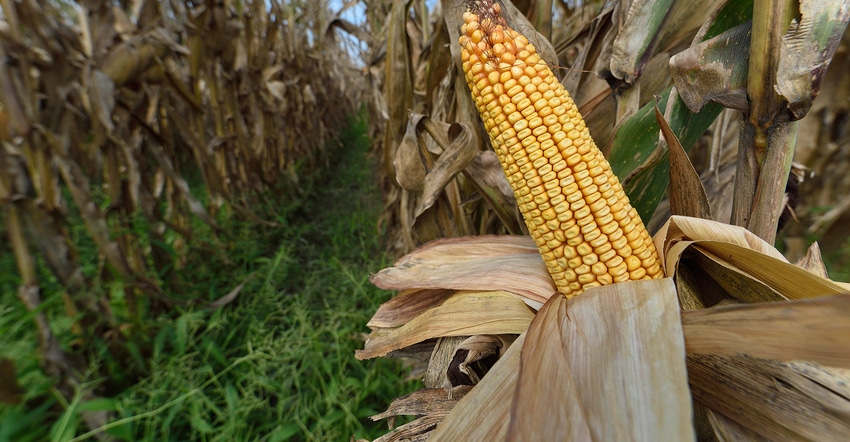September 11, 2018

Tropical Storm Gordon interrupted harvest across Mississippi, but the storm left most of its wind along the coast and does not seem to have damaged the state’s corn crop.
Erick Larson, corn specialist with the Mississippi State University Extension Service, said there was a lot of corn in the field when the storm arrived, particularly in the northern part of the state, but rain alone generally does little damage to corn awaiting harvest.
“The grain and plants are fairly robust and can withstand the rain, particularly if it clears out with warm, sunny weather afterwards,” Larson said. “Wind is the biggest potentially damaging factor with storms like this, because severe wind will force the stalks to lodge. They fall over like dominoes, or the stalk breaks somewhere between the ear and ground level.”
Although lodged corn can be harvested, the crop usually suffers losses and the process requires more time and effort.
Gordon brought about 9 inches of rain to an area in Carroll and Montgomery counties, and this downpour may cause some localized problems. The northern areas of the state with the most corn left in the field got the least rain from the tropical storm.
The U.S. Department of Agriculture estimated Mississippi’s corn was 57 percent harvested by Sept. 2, keeping pace with recent harvest trends. The state is expected to yield an average of 185 bushels an acre, with yields significantly higher on irrigated acreage than on dryland fields. In 2017, the state had an average yield of 188 bushels per acre.
Larson said cool weather at planting gave the crop a slow start through April. Much warmer weather in May allowed the crop to catch up a lot, but harvest this year started about a week later than normal.
Alex Deason, Extension agriculture agent in Sunflower County, said the corn in the central Delta was much more than 70 percent harvested by the first week of September. With rain in the forecast, some growers left corn standing and switched to harvesting soybeans, which are more susceptible to bad weather when mature in the field.
“Yields so far have been very pleasing,” Deason said. “This is surprising since our planting progress and what we went through early in the season did not point toward the type of yields that we’re getting.”
Most corn in the Delta is irrigated and typically averages about 200 bushels or more an acre. Dryland corn, which is most of the crop in the hills region of northeast Mississippi, was farther behind and usually yields 140 to 170 bushels an acre.
Charlie Stokes, Extension agricultural agent in Monroe County, said no more than 50 percent of the corn around Clay and Monroe counties has been harvested. Harvest has not even begun on corn planted farther north.
“Our corn acres are down a little because we got more cotton, and some places north of Tupelo didn’t get to plant corn at all because of rain at planting time,” Stokes said. “Once we can get back in the fields, we’ll have some people finished in just a few days.”
Josh Maples, an Extension agricultural economist, said expected high yields have kept downward pressure on corn prices.
“Demand for corn use is strong, but expected supplies are rising faster than use, which has led to increased expected ending stocks,” Maples said. “Trade uncertainty has also impacted market prices.”
At $3.50 to $3.60 a bushel, corn prices are a little stronger than prices a year ago, but prices declined from expectations earlier in the year.
“December futures topped $4.25 a bushel on May 29, before declining over the past few months,” he said. “December futures are now around $3.65, which is still a little higher than they were at this time a year ago.”
About the Author(s)
You May Also Like






